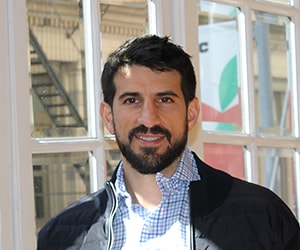Chad Cascarilla is CEO and co-founder of Paxos, a fintech startup that is regulated as a trust company. He spoke with Global Finance about the current state of blockchain, common misconceptions and why uptake among corporates seems slow.
Global Finance: How do you view blockchain?
Charles Cascarilla: To me it’s a very interesting database tool. It’s actually not really a novel technology; it’s made of multiple technologies, and the youngest technology in blockchain is 20 years old. What is novel is the way the technology is combined to create a distributed database, versus more typically centralized databases. We think it’s the best technology today to accomplish what we are trying to do at Paxos—mobilize assets and simplify settlement—but at the end of the day, it’s a tool.
 |
GF: What exactly is this tool good for?
Cascarilla: Blockchains are useful when you have a network of participants working together. Almost any industry with many firms all transacting together can find power in a blockchain, removing the need for constant reconciliation between different parties. It allows everyone to understand who owns what, when, and it creates efficiencies.
Financial services is an obvious one, because there are endless numbers of intermediaries and the need for better settlement. It’s an endless Tower of Babel, tying up trillions of dollars of capital. Just in US equities, it’s $40 billion-$50 billion in rolling capital that is constantly trapped, not even including reconciliation errors. Banks are turning to blockchain as well. Their success will depend on whether they are using it to truly create value-added services. Some firms will get real benefits. Those that don’t adapt will lose. Firms will struggle if they are chasing blockchain instead of solving real problems.
GF: In what other industries do you see blockchain as relevant?
Cascarilla: Any time you need to keep records and there is a lot of reconciliation between counterparties and intermediaries. Some examples are health-care insurance claims, real estate records and supply chains. Walmart, for example, uses blockchain to track lettuce; and Maersk, the shipping company, uses blockchain.
GF: What does it accomplish for its users?
Cascarilla: You are creating a chain of title, so you understand who owns what, where and when. Blockchain brings the ability to have multiple persons or institutions accessing one database—but each controlling their own information. All parties are in agreement. You can put any information on the blockchain: health-care information; lettuce; shipping containers; anything. Even a very large company—for example, one with many international subsidiaries—could create an internal blockchain for their entities worldwide.
GF: A new survey found 70% of companies aren’t even thinking of using blockchain. Why isn’t uptake greater?
Cascarilla: It’s still in its very early stages. Blockchain has gotten a lot of hype, and it’s not a simple solution. Companies are resistant because it can be confusing and complex. Solutions need to save money, be simple to adopt and have meaningful impact on day one—that’s magic.
GF: Are some countries or regions more advanced than others?
Cascarilla: Asia has gone bananas with public blockchains. A huge amount of retail [blockchain] activity is very Asia-centric. The US probably has the most robust startup activity, enterprise interest and corporate enthusiasm. Europe and Asia are tied at second in those areas.
GF: What about security?
Cascarilla: Blockchain is all on the internet, so it all comes down to passwords and where you save them. Ideally, you save them not on the internet, and you store your blockchain data and assets somewhere that is secure and regulated. Ultimately, it depends on how people use the tools. Blockchain is not going to solve global hunger and world peace, but it is a powerful tool that can benefit many people and industries.



